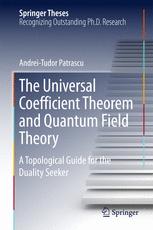

Most ebook files are in PDF format, so you can easily read them using various software such as Foxit Reader or directly on the Google Chrome browser.
Some ebook files are released by publishers in other formats such as .awz, .mobi, .epub, .fb2, etc. You may need to install specific software to read these formats on mobile/PC, such as Calibre.
Please read the tutorial at this link: https://ebookbell.com/faq
We offer FREE conversion to the popular formats you request; however, this may take some time. Therefore, right after payment, please email us, and we will try to provide the service as quickly as possible.
For some exceptional file formats or broken links (if any), please refrain from opening any disputes. Instead, email us first, and we will try to assist within a maximum of 6 hours.
EbookBell Team

4.8
74 reviewsThis thesis describes a new connection between algebraic geometry, topology, number theory and quantum field theory. It offers a pedagogical introduction to algebraic topology, allowing readers to rapidly develop basic skills, and it also presents original ideas to inspire new research in the quest for dualities. Its ambitious goal is to construct a method based on the universal coefficient theorem for identifying new dualities connecting different domains of quantum field theory. This thesis opens a new area of research in the domain of non-perturbative physics—one in which the use of different coefficient structures in (co)homology may lead to previously unknown connections between different regimes of quantum field theories. The origin of dualities is an issue in fundamental physics that continues to puzzle the research community with unexpected results like the AdS/CFT duality or the ER-EPR conjecture. This thesis analyzes these observations from a novel and original point of view, mainly based on a fundamental connection between number theory and topology. Beyond its scientific qualities, it also offers a pedagogical introduction to advanced mathematics and its connection with physics. This makes it a valuable resource for students in mathematical physics and researchers wanting to gain insights into (co)homology theories with coefficients or the way in which Grothendieck's work may be connected with physics.